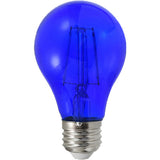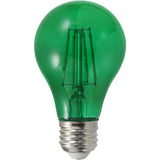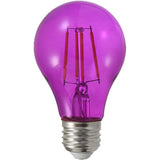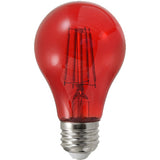Will a Yellow Bug Light Actually Keep Bugs Away?
Posted by Nick on for ProLampSales
It's getting to be that time of the year again, when the weather starts warming up, and the snow turns to rain. One of the consequences of that is bugs. A veritable plague of mosquitoes, moths, and other annoying insects that can keep you off the porch and motivate you to move back inside.
One common way to keep these bugs away is to use a bug light, a yellow light bulb that is advertised as keeping away all sorts of bugs without killing them. With incandescent, CFL, and LED varieties available on the market today, do they actually work? Can you keep bugs away just by buying some light bulbs?
How Bug Lights Work
As you might have read in our explanation of color temperature, light is divided into numerous wavelengths. Bug lights take advantage of the difference between human and insect eyes, in that many types of insects have trouble perceiving light with a lower color temperature.
In effect, the yellow bug light works by shifting the color temperature of the light lower on the spectrum to a point where it is nearly invisible to many flying insects.
Do Bug Lights Really Work?
Now, do they work? The answer is both yes and no. Light is made up of multiple wavelengths, so bugs will still be able to see your light in some manner. Even with a yellow light bulb, some blue light will be emitted, which insects can see - they just have more trouble seeing it than they otherwise would.
The yellow light just makes it more difficult for them to see your light source; with any luck, those insects stay away from your house and go bother someone further down the block! However, bug lights can keep bugs away for longer than they otherwise would if you used just a regular incandescent, CFL, or LED bulb.
But once a few bugs find the light, other bugs are sure to follow. The best way to keep bugs away is just to turn off any light you're not using. If that's not an option, then using a bug light is a cheap, effective, non-lethal way to enjoy the outdoors with significantly fewer insects buzzing around your party.
Alternatives to Bug Lights
Bug Zappers
One popular alternative to bug lights are bug zappers. These are fixtures that use an ultraviolet light bulb to attract bugs to it. Once the bugs are attracted to the light, an electrified mesh vaporizes the insect, killing it.
While zappers are popular, they may attract more harmless bugs than the biting mosquitoes and flies that cause humans and pets the most irritation. The mist of dead bug parts floating around in the air is also a potential health concern, due to bacteria and viruses that may have been inside the bugs or will be attracted to the decaying organic matter. Nevertheless, bug zappers remain a popular alternative to yellow bug lights.
Warm Dimming LEDs
Warm dimming LED light bulbs are a newer alternative to bug lights. These offer homeowners a range of color temperatures of their lights, allowing them to raise or lower the color temperature based on lighting conditions, time of day, or presence of bugs. These bulbs dim to a lower color temperature, shifting the light to a warmer, more yellowish/orange hue and away from a brighter white light.
- Posted in Landscape & Outdoor
Featured Products (View All)
2 comments





Terrry… Yes of course. It’s just a regular hulb, the color doesn’t change how it operates.
Can I use a yellow ‘bug bulb’ in my motion sensor light fixture/